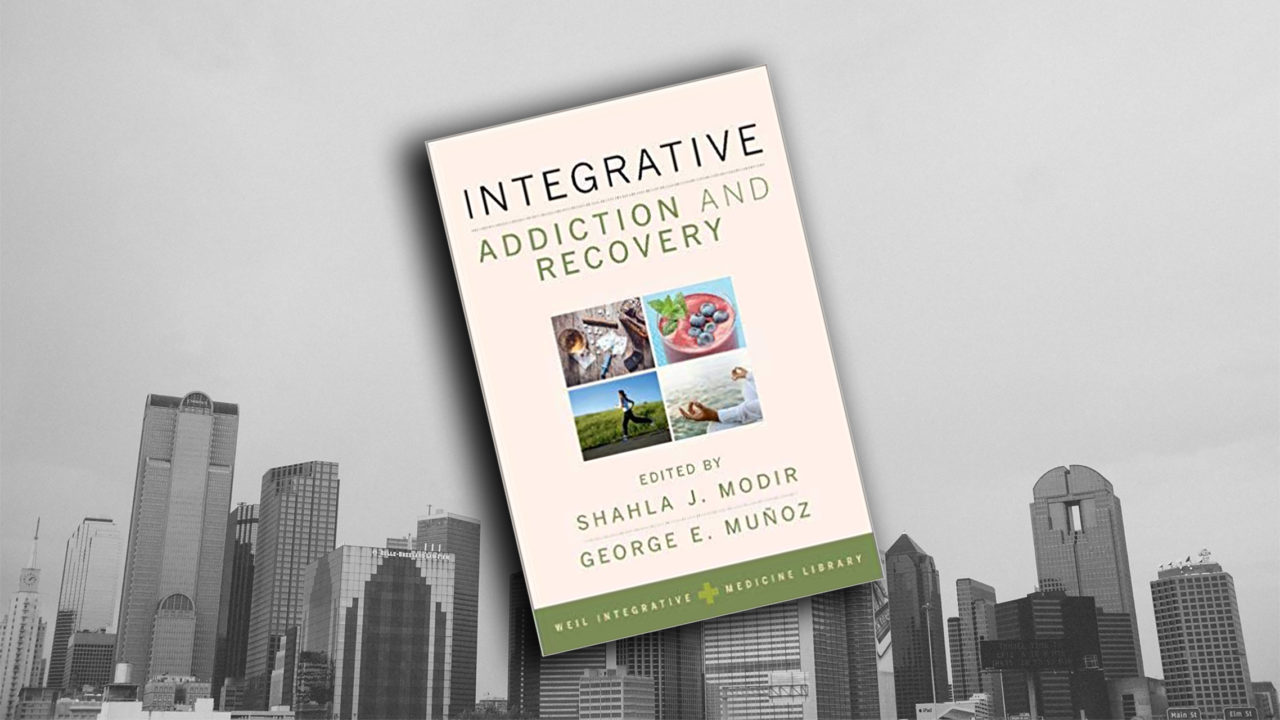 BY Victor S. Sierpina, MD, ABFM, ABIHM, Director, Medical Student Education Program, WD and Laura Nell Nicholson Family Professor of Integrative Medicine, Professor, Family Medicine University of Texas Distinguished Teaching Professor
BY Victor S. Sierpina, MD, ABFM, ABIHM, Director, Medical Student Education Program, WD and Laura Nell Nicholson Family Professor of Integrative Medicine, Professor, Family Medicine University of Texas Distinguished Teaching Professor
By now, we are all aware of the huge public health impact of addiction in our society. I introduce a resource for those of you facing this problem in patients, family, friends, or personally. It is a 2018 release from the Weil Integrative Medical Library, Integrative Addiction and Recovery by Shahla Modir and George Muñoz (Oxford University Press; ISBN 978-0-19-927533-4)
A recent essay by Dr. Larry Dossey entitled “Deaths of Despair” in Explore: The Journal of Science and Healing, Jan/Feb 2019 15:1 pp16) chronicles the reasons behind a dropping lifespan in midlife white men and white women without a college degree in our country. Their life expectancy has dropped in the past decade. Despite a century of remarkable improvements due in large part to better public health and medical care and nutritional awareness they are dying sooner than expected.
The about-face in the positive and enduring trend in US life expectancy is due to primarily to an increased death rate is due to addictions to drugs and alcohol, suicides, overdoses, liver disease, and more. Deaths from addictions are comparable to the loss of lives from the AIDS epidemic in the US over a decade or more. No other advanced country has seen such a decline in longevity.
In this context, the Integrative Addiction and Recovery textbook offers a variety of helpful approaches that support and are adjunctive to various social, psychological, community, legal, 12-step, and other programs for addiction.
Early on, the authors courageously take on food addiction, an underlying contributor to the obesity epidemic which clearly shorten lifespans through its impact on cardiovascular and diabetes risk, cancer, and dementia. They then cover the pathophysiology, pharmacology, epidemiology of a full range of addictions including Compulsive Buying Disorder, Gambling Disorder, Internet Gaming Disorder, Cannabis Overuse Syndrome as well as the usual suspects: tobacco, opiates, benzodiazepines, sedatives, stimulants cocaine, hallucinogens and so on.
Among the core options offered for a wide range of addictions are psychotherapy, group therapy, 12-step programs, cognitive behavioral therapy, medication-assisted therapy, all of which are fairly conventional care.
As we all know, these usual approaches are challenged by the problems our patients with these problems face such as high drop-out rates, relapse, mental health issues, insurance and financial limitations, and more.
Hence, there is a critical need to expand our tools for care of this at risk, vulnerable, and high early mortality population.
The text introduces Integrative Medicine options that can be considered in addition to the standard therapeutic milieu. The editors and over 3 dozen chapter authors bring in evidence for a broad palette of integrative approaches such as: acupuncture, diet, exercise, neurofeedback, yoga, tai chi, qigong, meditation, mindfulness, massage, botanicals and supplements, transcranial magnetic stimulation, hypnosis, cultural, energetic, spiritual approaches, motivational interviewing, homeopathy, Ayurvedic medicine, traditional Chinese medicine, functional medicine, creative arts, aromatherapy, equine-assisted therapy, spending time in nature, integrative approaches to chronic pain, and strategies for withdrawal and relapse prevention.
No one approach fits every person so individualizing integrative plans of care, prescriptions, and therapies are the key to being maximally effective for those suffering from addictions.
Each of these various therapies may be applied to individuals with a specific or multiple addictions and co-existing mental health issues. The authors’ recommendations are to approach patients patiently, scientifically, and holistically. Clinical creativity and following the patient story is critical.
Get a copy of the book into your personal and institutional library. Consider inviting editors or chapter authors to speak to topics and methods addressed in it at your institution. Offer additional training to your addiction specialists or invite integrative practitioners to join your therapeutic team.
These are just some ways we might bend the curve of longevity back to a positive one instead of the accepting the “deaths of despair” phenomenon described by Dr. Dossey that is now harming lives of millions of Americans and their families.
If our current treatment models are not effective, it is no fault on us or our patients.
The real question is whether we have the motivation, initiative, creativity, and courage to try new models of care.


